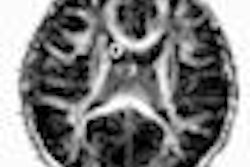In a study of chronic methamphetamine users, functional MRI (fMRI) showed brain abnormalities that appear related to risky decision-making.
Results of the study, led by Milky Kohno, PhD, from the University of California, Los Angeles, were published online May 21 in JAMA Psychiatry.
The researchers used fMRI to evaluate 25 methamphetamine users and 27 nonusers (control subjects). The subjects were examined at rest and when performing the Balloon Analogue Risk Task (BART), which involves the choice to pump up a balloon to increase earnings or cash out to avoid uncertain risk.
Meth users earned less than the healthy patients on the BART, Kohno and colleagues found. The meth users also showed less sensitivity to risk and reward in the brain region known as the right dorsolateral prefrontal cortex (rDLPFC), greater sensitivity in the ventral striatum, and greater mesocorticolimbic resting-state functional connectivity.
The healthy patients had a greater association between resting-state functional connectivity of the rDLPFC and sensitivity of the rDLPFC to risk during risky decision-making. The findings suggest that a deficit in rDLPFC connectivity contributes to dysfunction in methamphetamine users, the researchers concluded.



.fFmgij6Hin.png?auto=compress%2Cformat&fit=crop&h=100&q=70&w=100)




.fFmgij6Hin.png?auto=compress%2Cformat&fit=crop&h=167&q=70&w=250)











